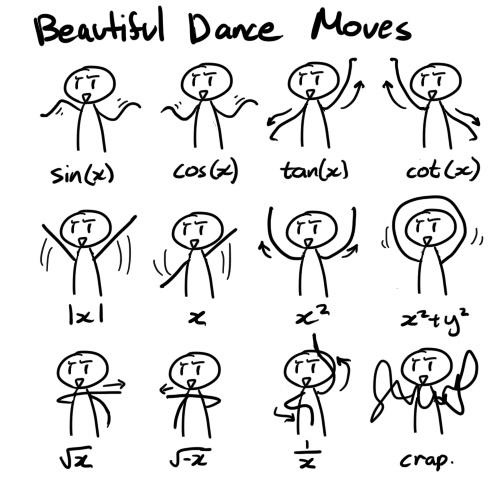
Our first unit in PreCalculus is essentially function analysis. Students learned about a few parent functions in algebra 2 last year and did some analysis. We are going to round things out and look at all the parent functions and sort of formalize our analysis with more complicated examples.
So we start off by exploring the parent functions. I've organized this in different ways over the years. And I'm pretty happy with my categories now. We do a big project later this semester where students create a picture on their graphing calculators using piecewise bits of as many parent functions as they can. The more variety of function types, the more points they can earn. So I wanted nice clear categories for my parent functions.
This is what I have:
1) The Identity (or Linear) Function f(x) = x
2) Quadratic Function (even power polynomial parent)
f(x) = x2
3) Cubic Function f(x) = x3 (odd
power polynomial parent) use window
[-6, 6] [-4, 4]
4) Absolute Value Function f(x) = |x| also
can be seen as the original piecewise function
5) Rational or Reciprocal Function (negative exponent power function) f(x) = 1/x
6) Square Root function f(x) = sq rt x (fractional exponent power
function)
7) The Greatest Integer Function f(x) = int(x) also written as f(x) = [x]. also called a step function.
8) Exponential FUNCTION f(x) = a(b)x we break this down by looking at two
graphs for this function; GROWTH when b > 1 (do f(x) = 2x and
DECAY when 0 < b < 1 (do f(x) = (1/2)x).
9) Logistic Function
10) Logarithmic Function f(x) = ln x
11) Sinusoidal Function – examining graphs for both Sine
Function f(x) = sin (x) and Cosine Function f(x) = cos (x)
12) Tangent Function f(x) = Tan(x)
Students start summarizing these by doing a little exploration on their graphing calculator. In their ISN they will draw the graph for each function and identify the domain & range. They use this worksheet to guide their work.
Here is what my pages look like so far in the ISN. (I messed up and cubic function is in the wrong order, sigh, but they are all there). And later we will fill in some other interesting characteristics of those functions.




No comments:
Post a Comment